Affiliate links on Android Authority may earn us a commission. Learn more.
Samsung Galaxy Z Fold 4 vs Galaxy Z Fold 5: Should you upgrade?


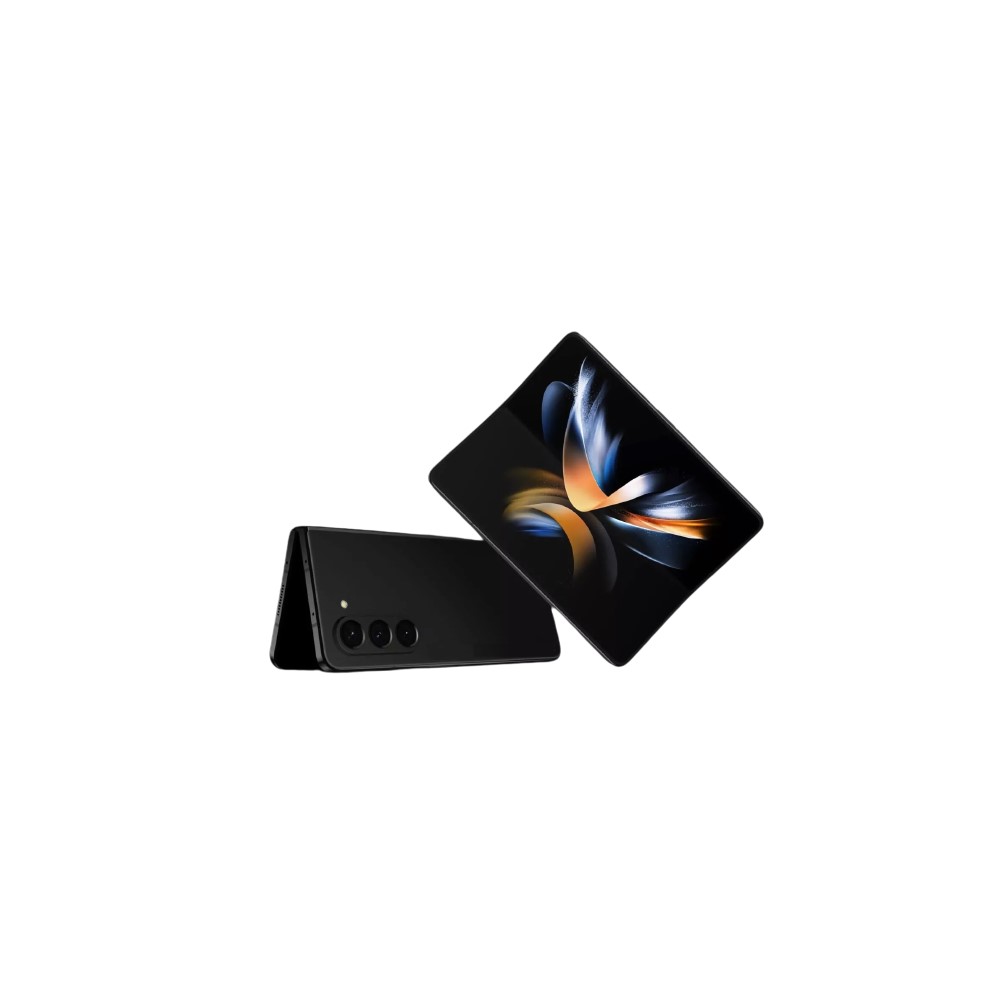

Foldables have gone mainstream, and Samsung gets to take a lot of credit for the same. The Galaxy Z Fold lineup has evolved from a mere idea to a product that bleeding-edge enthusiasts love. It’s a phone that opens up to reveal a bigger phone — what’s not there to love? If you’ve been convinced of Samsung’s vision with its foldables and purchased a Galaxy Z Fold 4, a valid question that you may have is, what does the Galaxy Z Fold 5 bring to the table? What changes and upgrades did Samsung carry out year-on-year? Should you upgrade from the Galaxy Z Fold 4 to the Galaxy Z Fold 5? We stack the two phones against each other in this Samsung Galaxy Z Fold 4 vs Galaxy Z Fold 5 comparison.
Samsung Galaxy Z Fold 4 vs Galaxy Z Fold 5: At a glance
Here's what Samsung has changed on the Fold 5 over the Fold 4:
- The Galaxy Z Fold 5 features a better hinge design than the Galaxy Z Fold 4, allowing it to fold flat.
- The Galaxy Z Fold 5 has a brighter internal display than the Fold 4.
- The Galaxy Z Fold 5 is 10g lighter and has a marginally smaller footprint than the Fold 4.
- The Galaxy Z Fold 5 features the Snapdragon 8 Gen 2 for Galaxy SoC, which is better than the Snapdragon 8 Plus Gen 1 SoC on the Fold 4.
Samsung Galaxy Z Fold 4 vs Galaxy Z Fold 5: Specs
| Samsung Galaxy Z Fold 5 | Samsung Galaxy Z Fold 4 | |
|---|---|---|
Displays | Samsung Galaxy Z Fold 5 Exterior: - 6.2-inch Dynamic AMOLED - 120Hz refresh rate - 2,316 x 904 resolution - 23.1:9 aspect ratio - Gorilla Glass Victus 2 Interior: - 7.6-inch Dynamic AMOLED - 120Hz refresh rate (LTPO) - 2,176 x 1,812 resolution - 1,750 nits peak brightness - Ultra Thin Glass | Samsung Galaxy Z Fold 4 Exterior: - 6.2-inch Dynamic AMOLED - 120Hz refresh rate - 2,316 x 904 resolution - 23.1:9 aspect ratio - Gorilla Glass Victus Plus Interior: - 7.6-inch Dynamic AMOLED - 120Hz refresh rate (LTPO) - 2,176 x 1,812 resolution - 1,000 nits peak brightness - Ultra Thin Glass |
Processor | Samsung Galaxy Z Fold 5 Qualcomm Snapdragon 8 Gen 2 for Galaxy | Samsung Galaxy Z Fold 4 Qualcomm Snapdragon 8 Plus Gen 1 |
RAM | Samsung Galaxy Z Fold 5 12GB | Samsung Galaxy Z Fold 4 12GB |
Storage | Samsung Galaxy Z Fold 5 256GB, 512GB, or 1TB No expandable storage | Samsung Galaxy Z Fold 4 256GB, 512GB, or 1TB No expandable storage |
Power | Samsung Galaxy Z Fold 5 4,400mAh dual-battery 25W wired charging Fast Wireless Charging 2.0 Wireless PowerShare No charger in box | Samsung Galaxy Z Fold 4 4,400mAh dual-battery 25W wired charging Fast Wireless Charging 2.0 Wireless PowerShare No charger in box |
Cameras | Samsung Galaxy Z Fold 5 Exterior rear: - 50MP wide, 1.0μm, OIS, Dual Pixel AF, ƒ/1.8 - 12MP ultra-wide, 1.12μm, ƒ/2.2 - 10MP telephoto, 1.0μm, OIS, 3x zoom (30x digital), ƒ/2.4 Exterior front: - 10MP ƒ/2.2, 1.22μm Internal UDC: - 4MP, 2.0μm, ƒ/1.8 | Samsung Galaxy Z Fold 4 Exterior rear: - 50MP wide, 1.0μm, OIS, Dual Pixel AF, ƒ/1.8 - 12MP ultra-wide, 1.12μm, ƒ/2.2 - 10MP telephoto, 1.0μm, OIS, 3x zoom (30x digital), ƒ/2.4 Exterior front: - 10MP ƒ/2.2, 1.22μm Internal UDC: - 4MP, 2.0μm, ƒ/1.8 |
Audio | Samsung Galaxy Z Fold 5 Stereo speakers Dolby Atmos support No 3.5mm headphone port | Samsung Galaxy Z Fold 4 Stereo speakers Dolby Atmos support No 3.5mm headphone port |
Durability | Samsung Galaxy Z Fold 5 IPX8 | Samsung Galaxy Z Fold 4 IPX8 |
Biometrics | Samsung Galaxy Z Fold 5 Side-mounted capacitive fingerprint sensor | Samsung Galaxy Z Fold 4 Side-mounted capacitive fingerprint sensor |
SIM | Samsung Galaxy Z Fold 5 Dual nano-SIM tray eSIM support | Samsung Galaxy Z Fold 4 Dual nano-SIM tray eSIM support |
Software | Samsung Galaxy Z Fold 5 Android 13 One UI 5.1.1 | Samsung Galaxy Z Fold 4 Launched with Android 12L with One UI 4.1 Upgradable to Android 13 with One UI 5.1 |
Dimensions and weight | Samsung Galaxy Z Fold 5 Folded dimensions: - 154.94 x 67 x 13.4mm Unfolded dimensions: - 154.94 x 129.8 x 6mm Weight: - 253g | Samsung Galaxy Z Fold 4 Folded dimensions: - 155.1 x 67.1 x 15.8mm Unfolded dimensions: - 155.1 x 130.1 x 6.3mm Weight: - 263g |
Colors | Samsung Galaxy Z Fold 5 Global: Cream, Icy Blue, Phantom Black Samsung Exclusive: Gray, Blue | Samsung Galaxy Z Fold 4 Global: Gray Green, Beige, Phantom Black Samsung Exclusive: Burgundy |
When looking at the Galaxy Z Fold 5 from the lens of an existing Fold 4 owner, the most significant change in Samsung’s foldable flagship is the new hinge. Samsung calls it the new Flex Hinge, which folds flat for a clean look. There are no gaps when the Fold 5 is folded shut, which is in noticeable contrast to the visible gap near the hinge on the Fold 4.
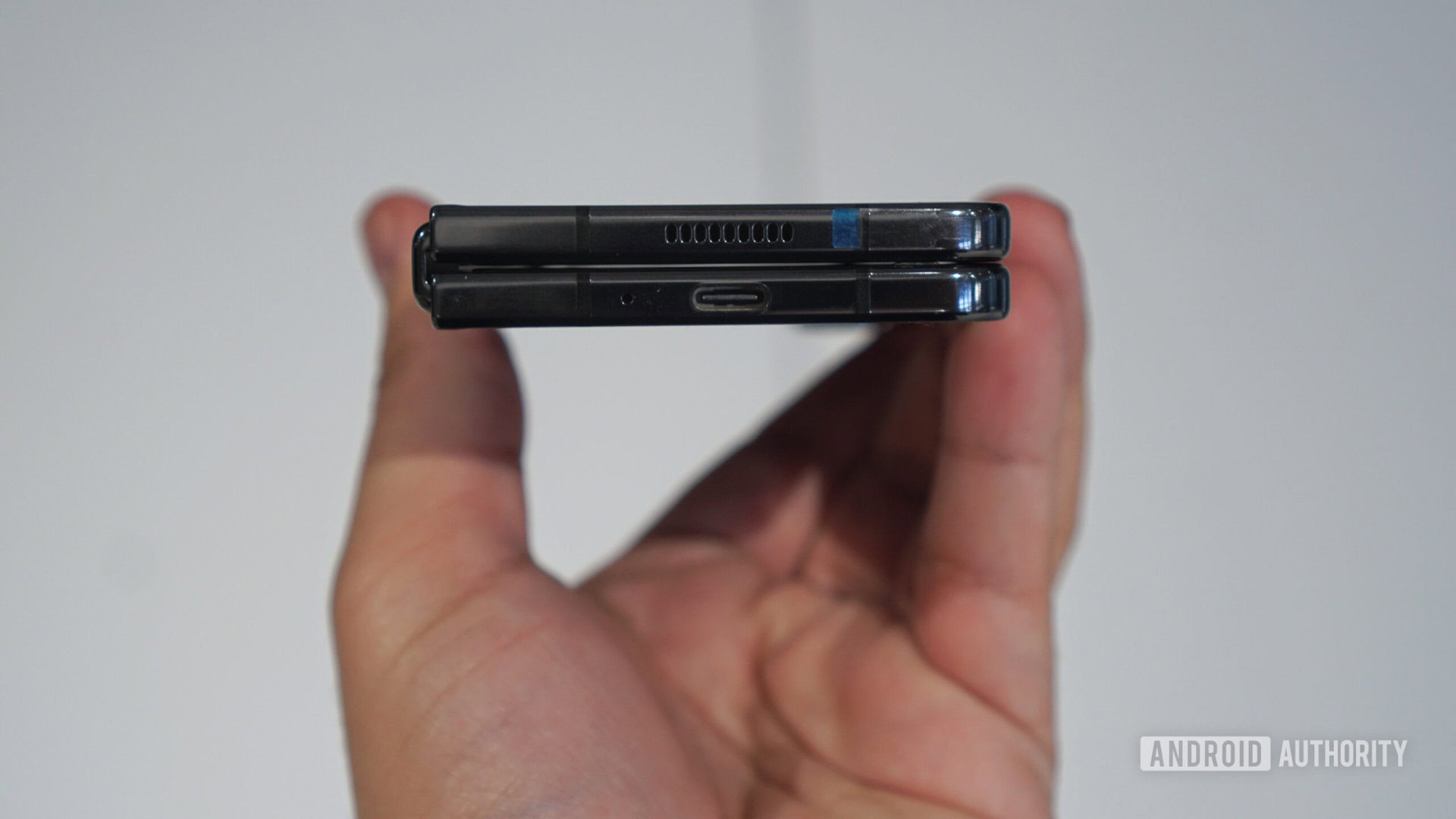
Samsung says that the new Flex Hinge comes with fewer moving parts, making it more durable than the previous generation. The hinge is rated for 200,000 folds, equivalent to folding and unfolding the Fold 5 more than 100 times a day for more than five years. The hinges on the Fold 3 and the Fold 4 also promised the same number. So you are unlikely to notice a change in durability. But the visual appeal of a flat-folding hinge cannot be understated.
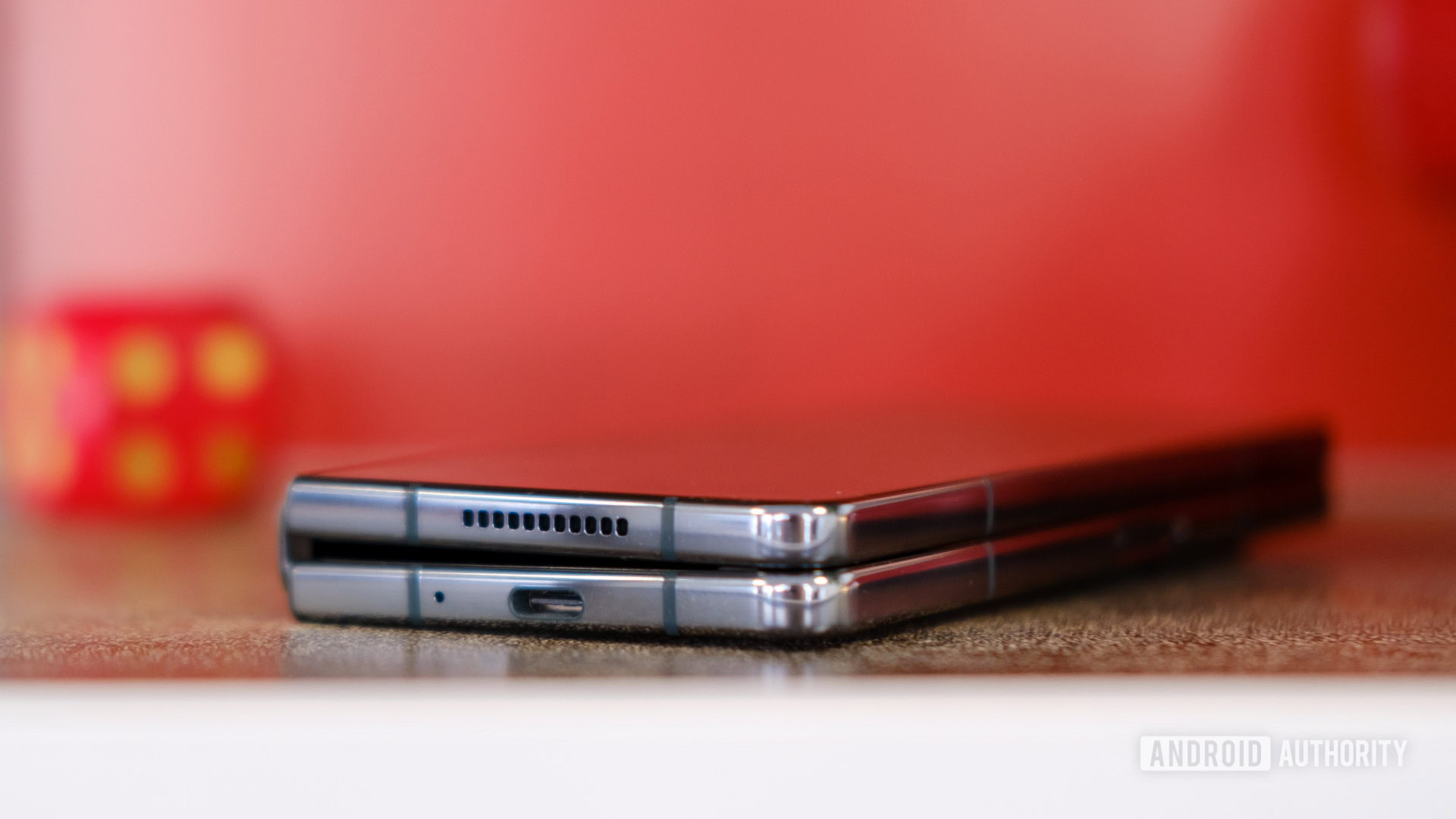
Samsung is also using a revised screen protector on the inner display. The company claims this revision has better adhesion and less bubbling. These are more minor changes that most people will not notice immediately, but they contribute towards your longer-term pleasant experience with the device.
The biggest change on the Fold 5 is the new hinge, though it does not improve the crease situation.
The crease on the Fold 5 is the same as on the Fold 4. Samsung has not made any improvements on this end. While the new hinge still manages to avoid a complete pinching of the display at the folding angle, it still results in a noticeable crease. You can notice it on both phones when you look at them from an angle.
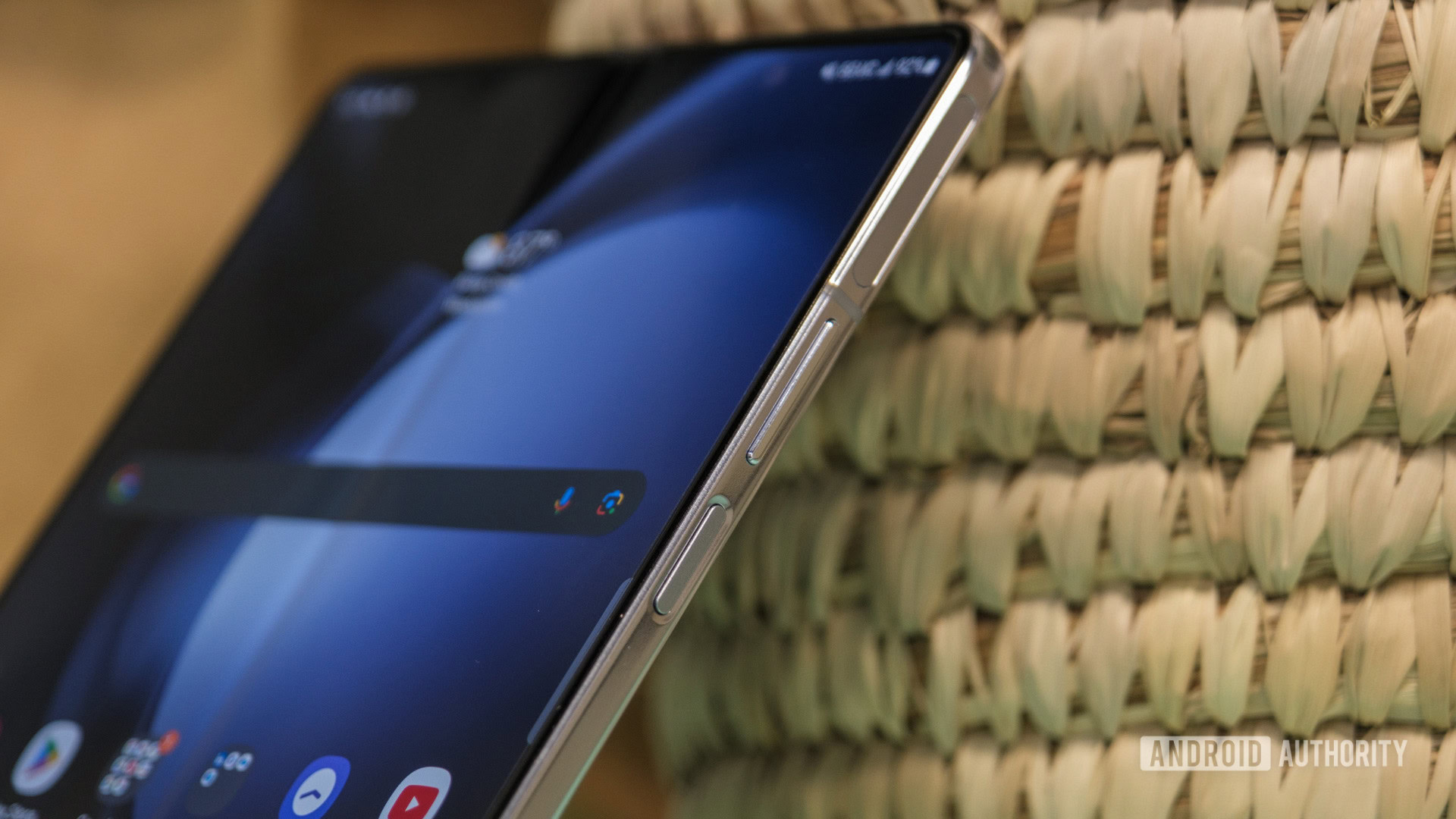
What this new hinge does manage to achieve is a marginally smaller device footprint for the Fold 5 in both folded and unfolded states over the Fold 4. That does mean that cases are not cross-compatible between the generations.
Beyond the hinge, the next most significant change is the processor upgrade. The Samsung Galaxy Z Fold 5 comes with the Qualcomm Snapdragon 8 Gen 2 for Galaxy, which is the premier choice of SoC these days. The “for Galaxy” branding means the chip slightly differs from the regular 8 Gen 2, offering higher peak CPU and GPU clock speeds. The increase is marginal, but it means that the Fold 5 is the best of the best.
The Snapdragon 8 Gen 2 for Galaxy is the next big upgrade on the Fold 5.
In comparison, the Galaxy Z Fold 4 comes with the Snapdragon 8 Plus Gen 1. This was the top SoC for Android when the Galaxy Z Fold 4 was launched, and it has aged very gracefully in the past year. While it no longer occupies the top spot, it occupies the second slot and is well-received for its excellent performance and efficiency.
Another small change on the Galaxy Z Fold 5 is that Corning’s Gorilla Glass Victus 2 now protects the exterior cover display. Gorilla Glass Victus Plus protects the Fold 4’s external cover display. We could not locate reliable documentation detailing the difference between the two, neither by Samsung nor by Corning.
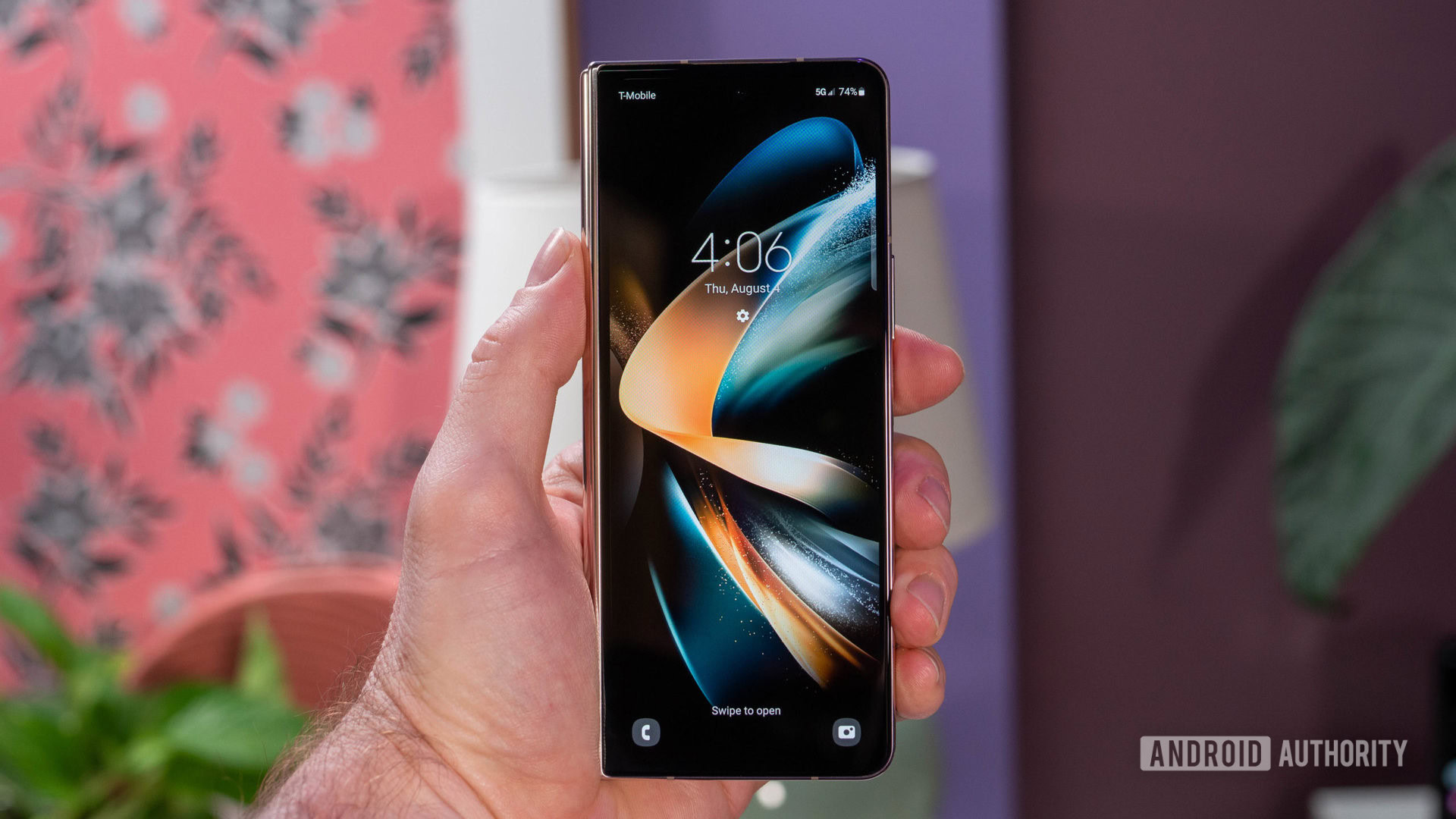
Beyond these changes and the changes in dimensions and weight, the Galaxy Z Fold 5 and the Z Fold 4 are near-identical. They have the same 6.2-inch 120Hz Dynamic AMOLED display on the cover, with a unique 23.1:9 aspect ratio and a resolution of 2,316 x 904 pixels. Both phones have a near-identical folded state, with the slight differences being in weight and how flat the hinge remains after folding.
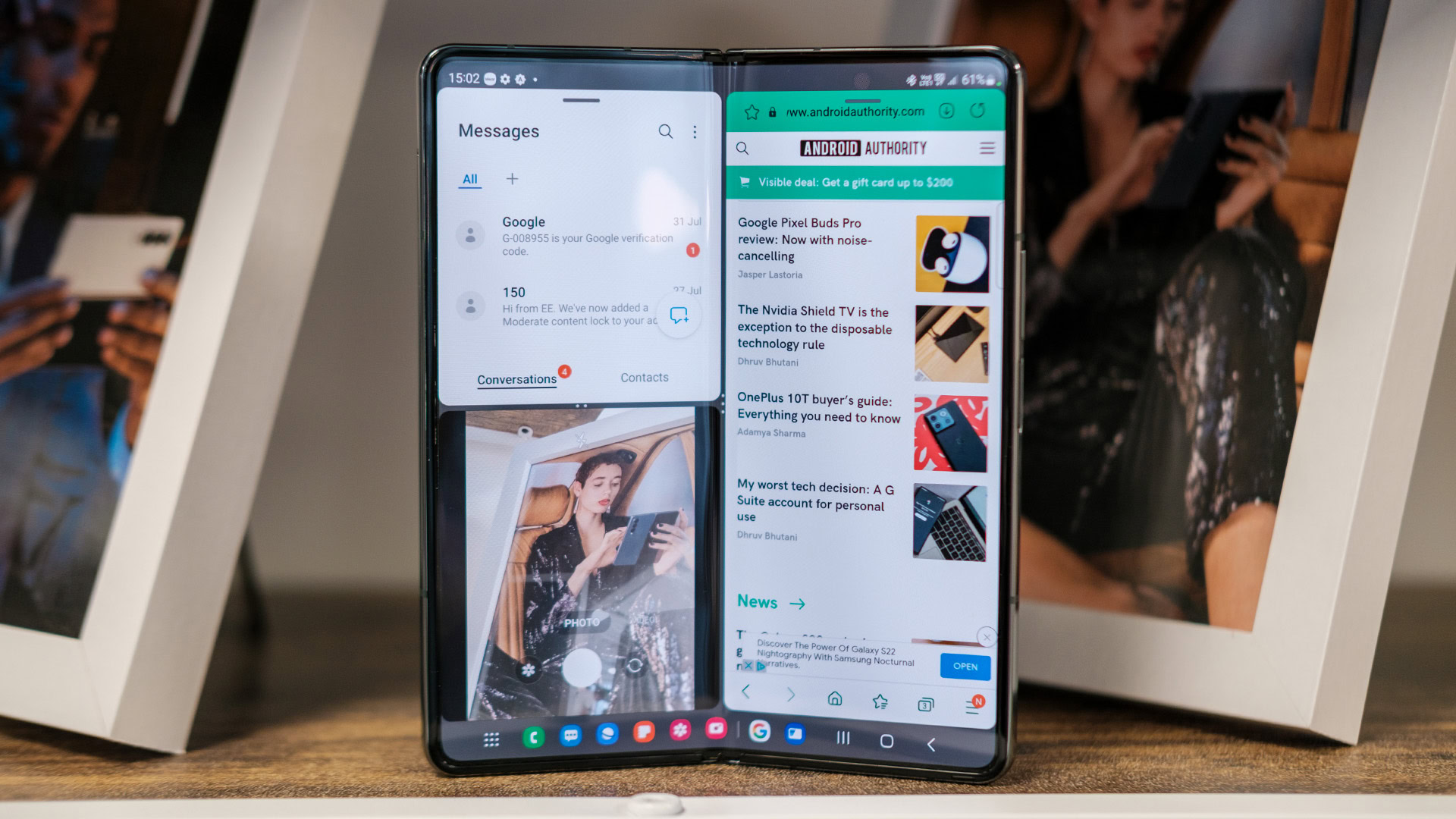
On the inside, the Fold 5 and the Fold 4 have the same 7.6-inch Dynamic AMOLED display with a 120Hz refresh rate and a 2,176 x 1,812 resolution. There is a difference in peak brightness though, with the Fold 5 coming in at 1,750 nits compared to the Fold 4’s 1,000 nits. These numbers are for HDR content, but you will also notice relatively higher brightness during daily use.
The inner display is an ultra-thin glass layer, but you will touch plastic as a screen protector is installed on top of it. The screen protector on the inner display is considered part of the device, so do not attempt to remove it on either phone. The inner display also houses the under-display camera, which is primarily intended for video calls.
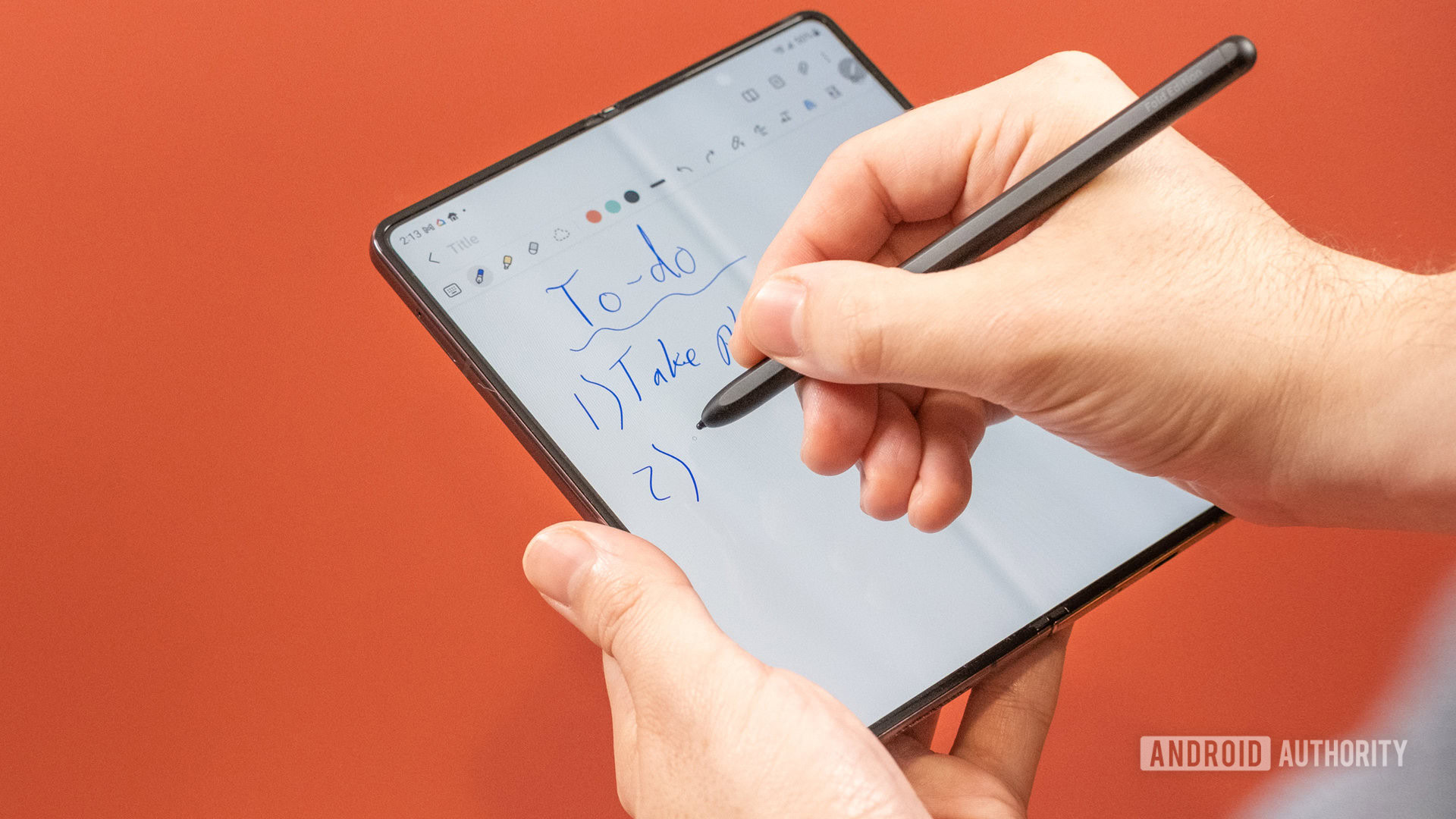
The inner display on both phones also supports the S Pen, while the outer cover display does not.
Samsung has made changes to the S Pen Fold Edition for the Fold 5, making it slimmer, but it’s still sold separately. The S Pen is not housed within either foldable, but Samsung has a new Slim S Pen case for the Fold 5 that integrates the S Pen better than the S Pen case for the Fold 4.
The S Pen Fold Edition for the Fold 5 is also different from the Fold 4's, but it continues to be sold separately.
Both phones come with identical storage and RAM. You get 12GB of RAM, with options of 256GB, 512GB, or 1TB of internal storage. Samsung does not disclose the RAM and storage specifications of its phones. Neither phone has expandable storage.
Other bits of the phones are also the same. There is a side-mounted capacitive fingerprint sensor for biometric authentication on both phones. Both foldables come with an IPX8 rating for water resistance. Both phones miss out on a 3.5mm headphone jack.

The Galaxy Z Fold 5 launched with One UI 5.1.1 based on Android 13. The Galaxy Z Fold 4 launched a year earlier, so it launched with One UI 4.1 based on Android 12L. Since then, Samsung has updated the phone, so you now get One UI 5.1 based on Android 13. We expect the Fold 4 to receive more updates that bring it to feature parity with the Fold 5.
Both phones will receive four major Android OS updates and five years of security updates from their launch date. The Fold 4 was launched a year ago, so it has used up one OS update and one year of security updates by this point.
Samsung Galaxy Z Fold 4 vs Galaxy Z Fold 5: Size comparison
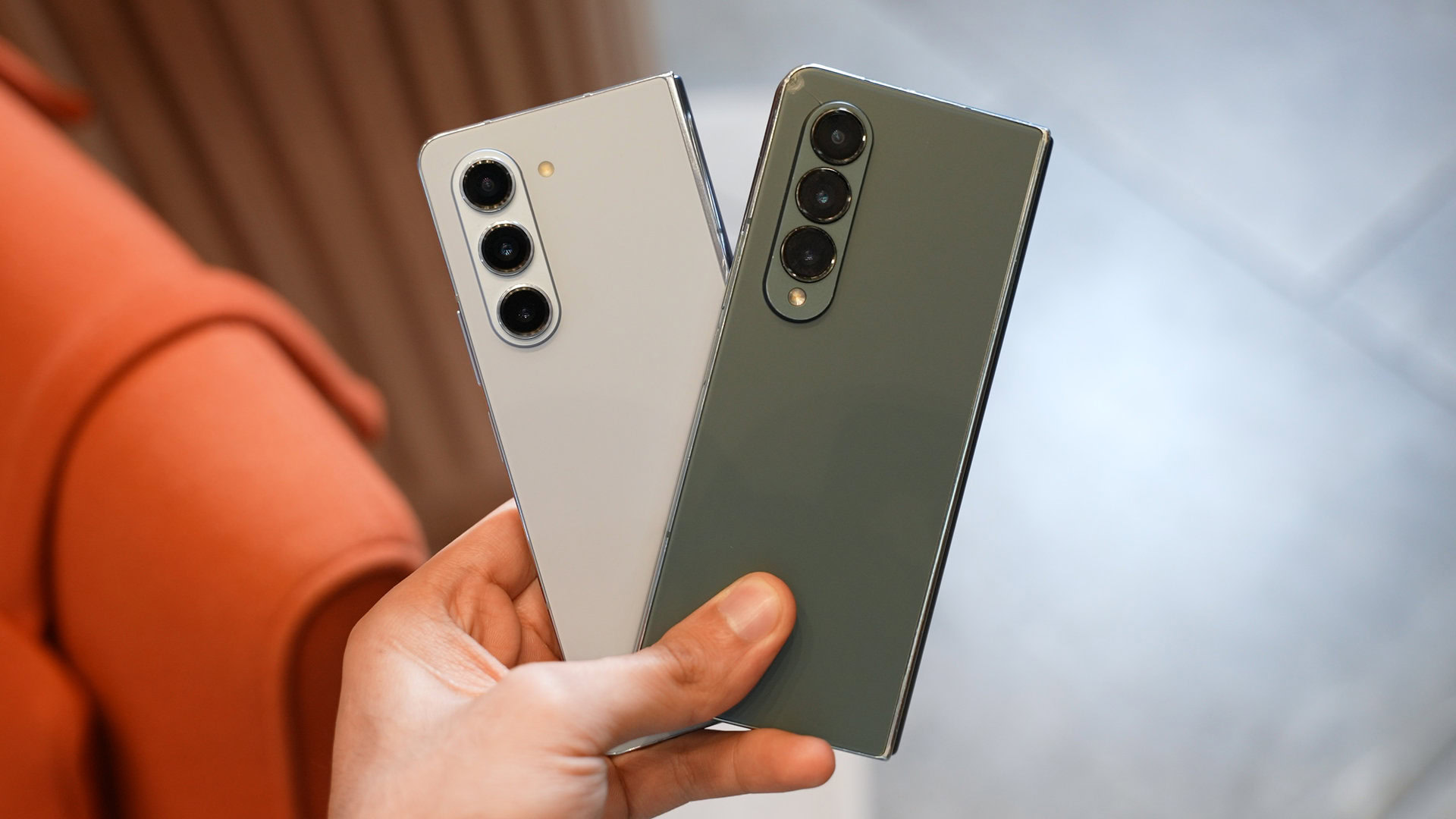
In its folded state, the Galaxy Z Fold 5 comes in at 154.94 x 67 x 13.4mm, while the Fold 4 is 155.1 x 67.1 x 15.8mm, making the new device marginally smaller. The thickness is measured at the hinge, and since the Fold 5 folds flat, that is where you see the biggest difference.
In its unfolded state, the Galaxy Z Fold 5 measures 154.94 x 129.8 x 6mm, while the Fold 4 is 155.1 x 130.1 x 6.3mm.
The Fold 5 is also 10g lighter at 253g compared to the Fold 4’s 263g of weight, and we’re thankful for all the weight reduction coming our way. This makes the Fold 5 easier to hold for an extended period of time.
As for the design, the phones are practically the same. You can only tell the Fold 5 apart from the Fold by the flat-folding hinge and the different camera module where the LED flash is now moved out of the camera island.
Samsung has chosen to retain everything else, so there’s a very clear identity that is established for the Z Fold line.
Samsung Galaxy Z Fold 4 vs Galaxy Z Fold 5: Camera
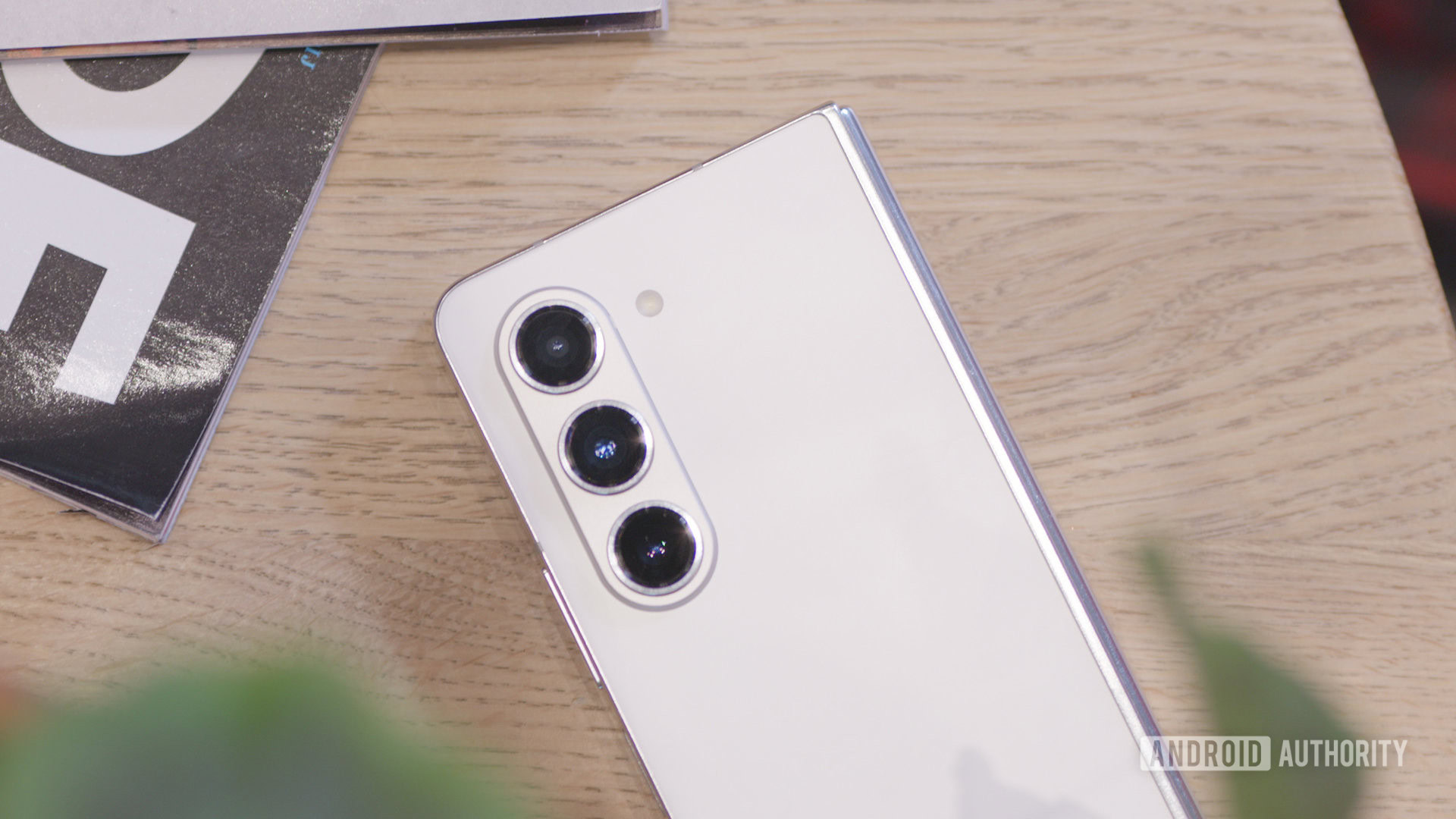
The cameras remain unchanged on the Galaxy Z Fold 5 and the Galaxy Z Fold 4. By and large, you will see similar camera performance, with the differences coming in only because of the ISP changes in the processors. We are in the process of extensively testing the camera of the Fold 5, but meanwhile, you can take a look at the camera samples from the Fold 4.
The primary camera on the Fold 5 and the Fold 4 is a 50MP sensor with an ƒ/1.8 aperture, 1.0μm pixel size, OIS, and Dual Pixel autofocus.
On the Fold 4, the sensor works very well across various situations. Photos have the distinct Samsung-style saturation, but the foldable overall manages to get good details, exposure, and even bokeh. Phone cameras have gotten really good on flagships, so the Fold 4 does lag behind by a little bit. But given enough light, most casual users should have no complaints with the Fold 4’s camera.
Samsung Galaxy Z Fold 4 primary camera samples
The ultrawide angle camera on both phones is a 12MP shooter with an ƒ/2.2 aperture, a 1.12μm pixel size, and a field of view of 123°. On the Galaxy Z Fold 4, you get noticeable stretch and distortion around the edges. The color profile on the ultrawide is different from the primary camera, with the ultrawide dropping saturation by a hint.
Samsung Galaxy Z Fold 4 ultrawide camera samples
Meanwhile, the telephoto camera on both phones is a 10MP shooter that can zoom in 3x optically and up to 30x digitally. It has an ƒ/2.4 aperture, 1.0μm pixels, and OIS. Shots at 3x on the Galaxy Z Fold 4 preserve good clarity and detail; you can go up to 10x while retaining usability. We wouldn’t recommend banking on the 30x digital zoom, though, as those shots are not great.
Samsung Galaxy Z Fold 4 telephoto camera samples
The primary front camera on both phones is present outside, on the cover screen. It is a decent 10MP sensor with an ƒ/2.2 aperture and 1.22μm pixel size. It delivers good color and decent details. Portrait mode is also pretty good, but there are a few missed strands of hair occasionally.
Samsung Galaxy Z Fold 4 exterior front camera samples
Both the Fold 5 and the Fold 4 come with a 4MP under-display camera with an ƒ/1.8 aperture and 2.0μm pixels. On the Fold 4, the image quality from this under-display camera is bad, to put it plainly. Saturation is all over the place, and details get muddled. It’s a good technical feature to show off, as it does hide well under the display, but its utility is best relegated to video calls on the inner display. There are better cameras on the same phone to shoot good selfies with.
Samsung Galaxy Z Fold 4 interior front (under-display) camera samples
Samsung Galaxy Z Fold 4 vs Galaxy Z Fold 5: Battery and charging
Both the Galaxy Z Fold 5 and the Galaxy Z Fold 4 come with a 4,400mAh battery. On the Fold 4 with the Snapdragon 8 Plus Gen 1, you can get around five and a half hours of screen-on time with a balanced use of the inner and outer displays. If you bank more on the cover screen, you can extend this number by a bit, while using the inner display heavily will shorten it up. Either way, that’s still a good number.
We’ll be testing the Galaxy Z Fold 5’s battery better over the coming days. But with the Snapdragon 8 Gen 2 SoC and its improved efficiency over the 8 Plus Gen 1, you can expect the phone to equal the Fold 4’s battery life, if not beat it.

For charging, both phones support 25W wired and 10W wireless charging. A USB Power Delivery PPS charger will take 85 minutes to charge up the Fold 4 fully. We will be testing the Fold 5, but since the specifications are the same, we aren’t expecting any large deviations.
Both phones also support 4.5W reverse wireless charging to charge accessories. However, neither phone comes with a charger in the box.
Samsung Galaxy Z Fold 4 vs Samsung Galaxy Z Fold 5: Price
- Samsung Galaxy Z Fold 5 (12GB + 256GB): $1,800
- Samsung Galaxy Z Fold 5 (12GB + 512GB): $1,920
- Samsung Galaxy Z Fold 5 (12GB + 1TB): $2,160
- Samsung Galaxy Z Fold 4 (12GB + 256GB): $1,800
- Samsung Galaxy Z Fold 4 (12GB + 512GB): $1,920
- Samsung Galaxy Z Fold 4 (12GB + 1TB): $2,160
As you may have noticed, there aren’t too many changes the Fold 5 brings over the Fold 4. What Samsung has managed to do, though, is keep the pricing of the Fold 5 the same as that of the Fold 4, despite a change in the larger macroeconomic conditions of the supply chain. For the same price as last year, you are getting a product you can call a proper refinement, especially with that new hinge.
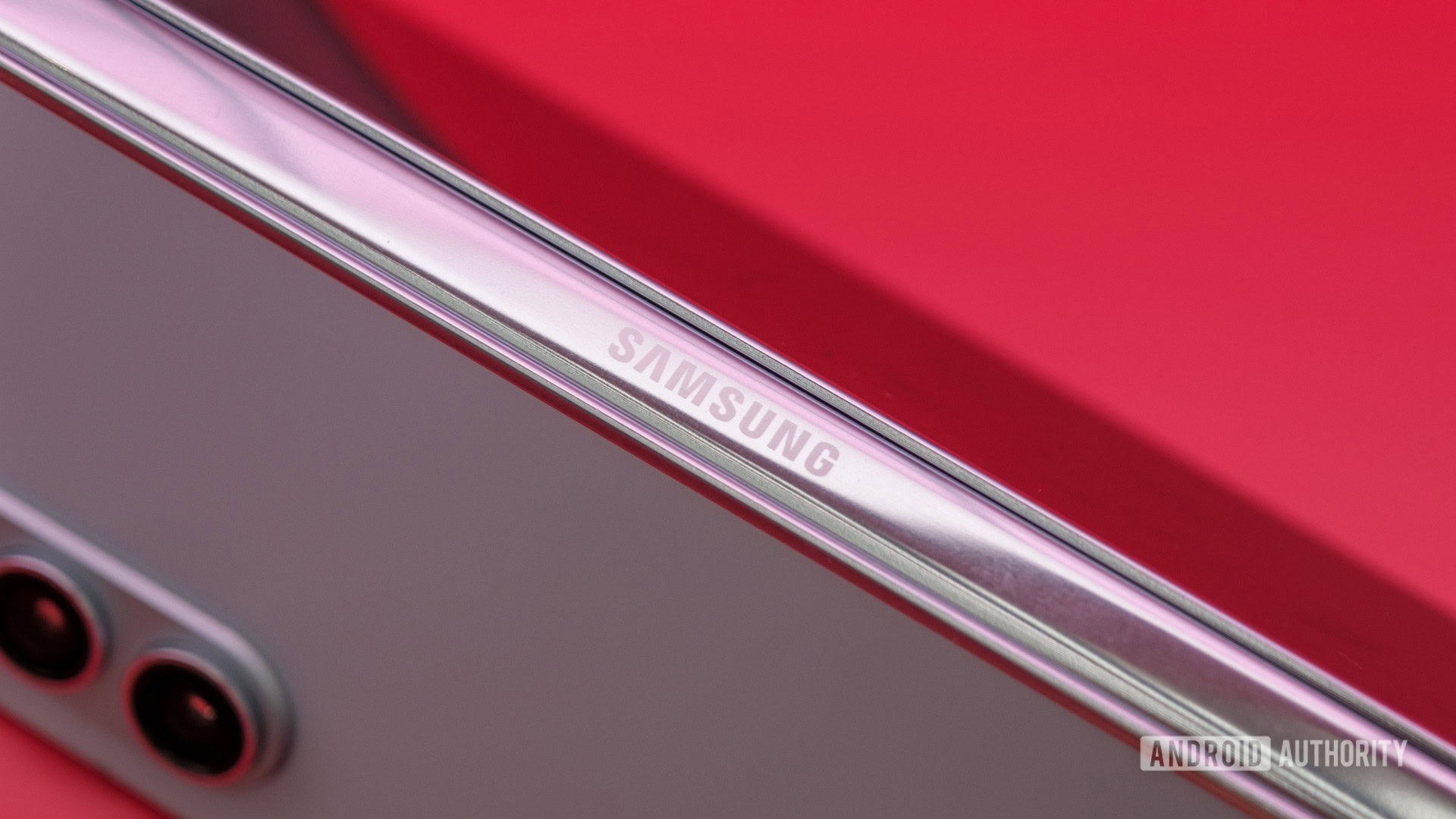
The Galaxy Z Fold 5 launched on July 26, 2023, with pre-orders beginning on the same day. The phone goes on open sale on August 11, 2023, in the US. Pre-order customers are eligible for a free storage update and up to $1,000 off through trade-in discounts.
The Galaxy Z Fold 4 launched on August 10, 2022, and went on open sale on August 26, 2022. Since a year has already passed, Samsung no longer officially sells the phone through its website, though there’s a chance you can pick one up from a carrier or reseller at a deep discount as part of their stock clearance.
Samsung Galaxy Z Fold 4 vs Galaxy Z Fold 5: Should you upgrade?
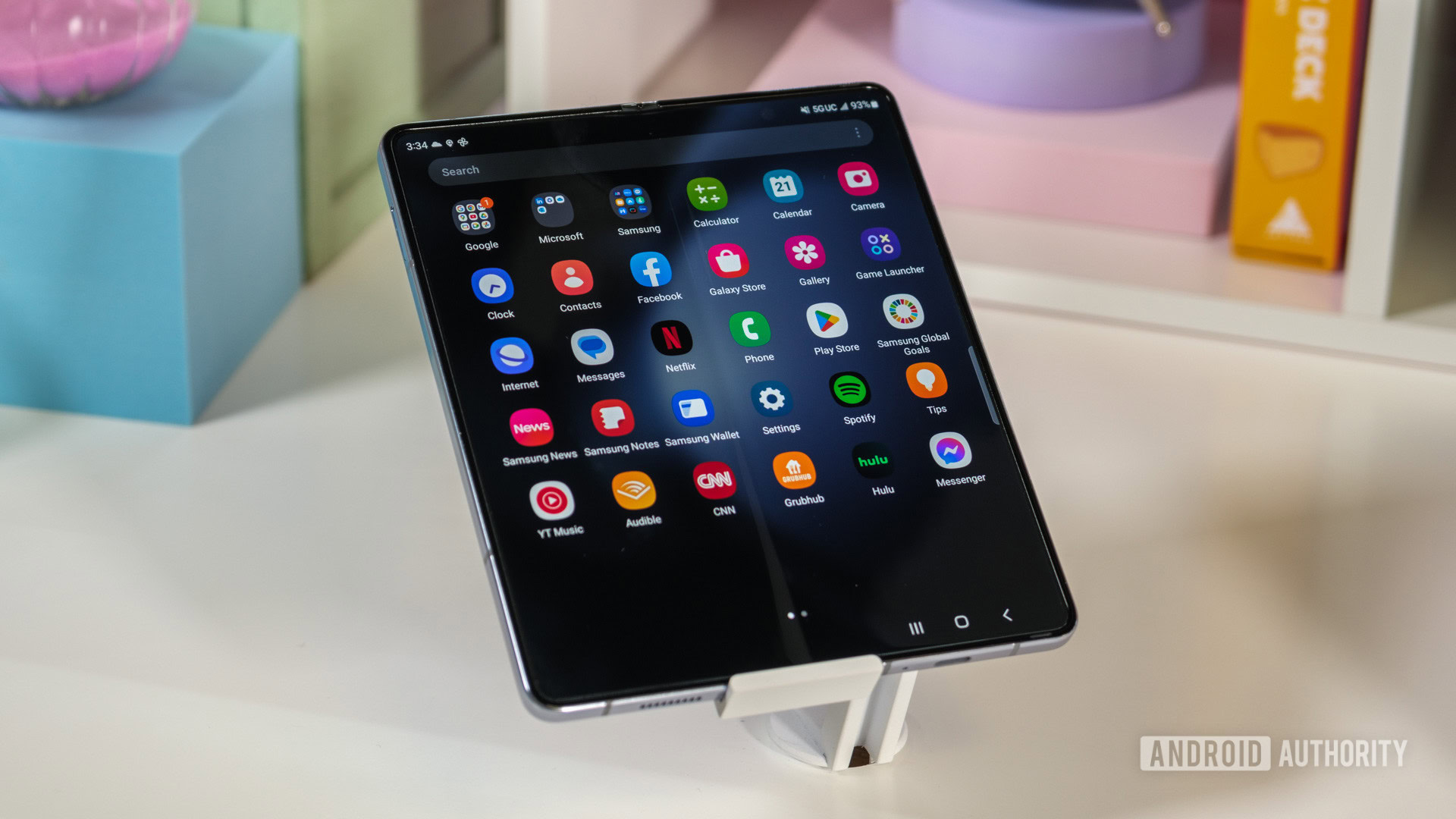
The Samsung Galaxy Z Fold 5 is the company’s best take on a large-screen foldable yet. It takes everything the Fold 4 does right and fixes one of the most significant hiccups from last year. If you’re in the market for a new large-screen foldable, the Galaxy Z Fold 5 is a great choice, just as the Galaxy Z Fold 4 was before.
The Galaxy Z Fold 5 is squarely an iterative upgrade over the Galaxy Z Fold 4.
That being said, for Fold 4 owners, the Galaxy Z Fold 5 is squarely an iterative upgrade. The new hinge is great, but it does not justify spending money and jumping up to the Fold 5. The brighter inner display on the Fold 5 is much appreciated, but the inner display on the Fold 4 was also perfectly usable.
The Snapdragon 8 Gen 2 is also great, but the Snapdragon 8 Plus Gen 1 is also pretty good and will remain relevant for a few more years. Even when combined with the other smaller changes, there isn’t enough reason to recommend Fold 4 owners to get the Fold 5.
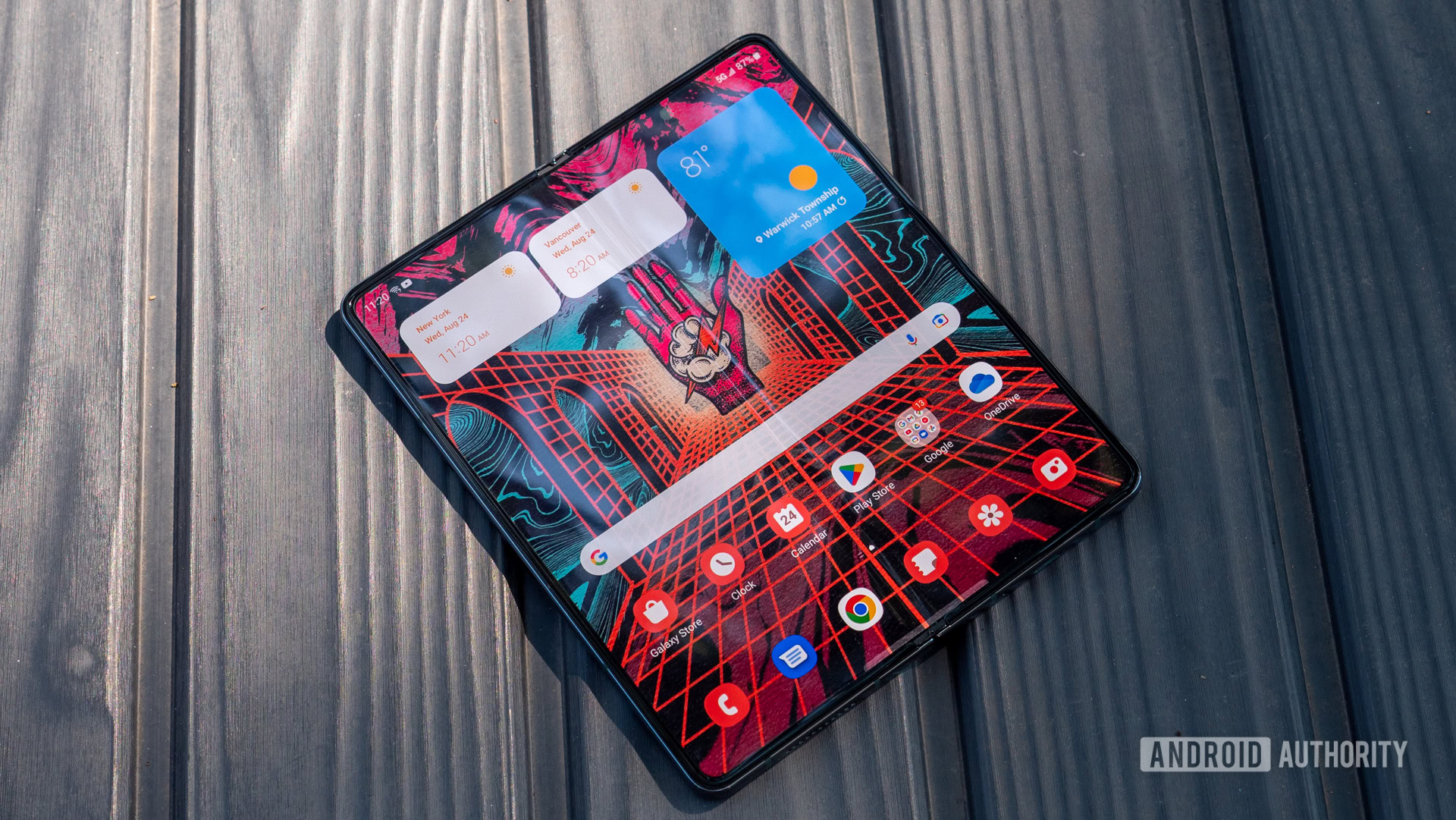
You should only upgrade to the Fold 5 from the Fold 4 if you are getting an excellent deal from your carrier that is not costing you any money so that you have a newer device that will last a bit longer than the outgoing model due to its age.
Will you upgrade to the Samsung Galaxy Z Fold 5 from the Fold 4?
For people considering a choice between a Galaxy Z Fold 5 at its launch price and a Fold 4 at discounted prices, the verdict isn’t as straightforward. Your purchase decision will boil down to how cheap you get the Fold 4. We consider both foldables great products; you can’t go wrong with either. Ideally, you should prefer the newer device if the difference is just a couple of hundred dollars, but a deep discount can feasibly turn the tide in the Fold 4’s favor.

Bright, vibrant displays
Powerful multitasking features

Large internal display
Long-term software support